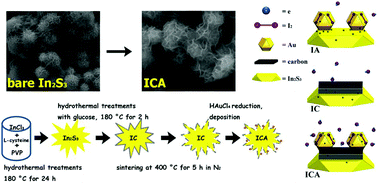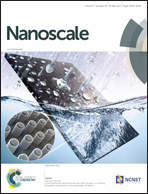A unique semiconductor–carbon–metal hybrid structure design as a counter electrode in dye-sensitized solar cells†
Abstract
The catalytic activity of counter electrodes (CEs) severely restricts the photovoltaic conversion efficiency of dye-sensitized solar cells. However, electrons trapped by bulk defects greatly reduce the catalytic activity of the CE. In this study, we report a novel In2S3–C–Au hybrid structure designed by simply decorating Au particles on the surface of carbon-coated hierarchical In2S3 flower-like architectures, which could avoid the abovementioned problems. This effect can be attributed to the unique contribution of indium sulfide, carbon, and Au from the hybrid structure, as well as to their synergy. Electrochemical measurements revealed that the hybrid structure possessed high catalytic activity and electrochemical stability for the interconversion of the redox couple I3−/I−. Moreover, this superior performance can be incorporated into the dye-sensitized solar cells system. We used this hybrid structure as a counter electrode by casting it on an FTO substrate to form a film, which displayed better photovoltaic conversion efficiency (8.91%) than the commercial Pt counterpart (7.67%).



 Please wait while we load your content...
Please wait while we load your content...